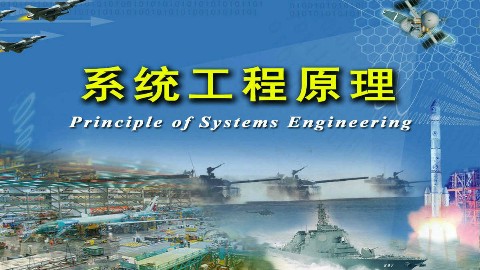
当前课程知识点:Socially-Responsible Real Estate Development: Learning to Use Impact Assessment Tools Effectively > Module 3: Social Impact Assessment > Lectures > Lecture 1
到目前为止 我们已经谈过了
环境影响评价(EIA)
现在我们来谈谈社会影响评价(SIA)
在很多国家 SIA被看作
是EIA的一部分
是各种环境影响关注点的
一小部分
而社会影响就像是额外的一小部分
我们可以通过它了解项目对就业的影响
对土地价值的影响
甚至是建筑选址错位造成的影响
还有其他社会影响
然而 在很多地方
SIA正变得越来越重要
也出现了实施SIA的指导方针
通常不是另行的法律规定
只是指导方针
我们已经讨论过了EIA的步骤
现在来看这些步骤是如何在SIA得以运用的
第一个是确立范围
我们得确定实施SIA的
时间范围及地理界限
我们把它当成一项单独的活动
这个讨论可能和
EIA里的地理界线与时间范围
不太一样
毕竟 社会影响发生的网络规模
与研究某个具体项目的
环境影响规模
要大不相同
后者范围要窄一些
再次重申 因为这些决定都是非客观的
也就是说 它们并不科学
没有哪个社会学家可以说
某个大型综合
房地产开发项目的
SIA地理界线就是如此
我们需要让利益相关方参与进来
想公正地处理这些非客观的判断
唯一的方法就是确认
受SIA分析所影响的群体
在SIA实施一开始就有发言权
让他们可以参与决定影响的规模
项目的范围
地理界线及时间范围分别是什么
SIA同样要经历这些步骤
考虑同样的问题
但是我觉得其答案可能会产生
一些不同的效果
当SIA没有自成体系时
它与EIA设定的地理界限 时间范围
及影响规模之间有一丝紧张关系
以SIA的一小部分
作研究对象时
为了研究那一小部分而改变整个评价影响
会非常困难
所以我才认为应该把SIA
当成独立的部分来看待
当你考虑需要在SIA中研究的
那些构建选项时
显然就不会与开发商最中意的方案产生对抗
为了提高某地区的收入
其他的构建选项可能以多种形式存在
它们可以用来提高房产价格
让财政收入
流入市政当局或政府
借助相关市政府力量
帮助那些在经济上
受到拟开发项目负面影响的人群
所以任选范围与科技 或者设计的关系
不是那么大 也可能有些关系
但它们更侧重的是财务
创造就业机会
及其他社交网络相关的问题
SIA中的利益相关方
也可能会有所不同
当然 社会福利部门的参与
是一定少不了的
负责住房以及
决定提供何种公益住房的部门
也必须参与其中
所以 出面的利益相关方
也发生了改变
谈了影响的规模后
我们接下来看到的是下方的选项
这和EIA也有所不同
我们谈了参与的利益相关方
现在来看看假定矩阵对角上方的
影响规模
社会影响明显不同于
环境影响
同样 经考验证明好的社会影响
也是不存在的
当然 人们肯定想知道会产生什么样的收入效应
什么样的住房成本效应
什么样的就业效应
同样 像社区凝聚力这样的社会影响
就多多少少难以定义了
当某个项目打破一个地区内的社会生活方式时
会产生什么结果
SIA必须将这点考虑在内
社会科学及城市规划专家
可以建议什么是SIA中社会影响的适当规模
但我认为 最终的决定
必须能够反映
利益相关方关注的问题
当然 和EIA一样 数据的可用性
预测能力高低
以及时机的掌握等等因素
都会限制SIA的范围
实际上 如果你不建模
那么把它包含在SIA的研究范围内
就没有意义
-Welcome
--Welcome
-Course Welcome
--Welcome
-Entrance Survey
-Entrance Survey
-Learning Objectives
-Course Schedule
-Meet Your Course Instructors
-Grading and Completion Criteria
--html
-Introduction
-Lectures
--html
-Readings
--Social Impact Assessment: The State of the Art
--Social Impact Assessment and Public Participation in China
-Developer Interview
--Module 1
--html
-Questions
-Assignment
--html
--html
--Peer Assessment
-Debrief
--Discuss
-Introduction
-Lectures
-Readings
--Methods of Environmental Impact Assessment
--Public Participation and Environmental Dispute Resolution
--Environmental Impact Assessment for Developing Countries in Asia
--Importance of Nonobjective Judgements
--Example Environmental Impact Statement
-Developer Interview
--html
--Module 2
--html
-Questions
-Assignment
--html
--Peer Assessment
-Debrief
--Discuss
-Introduction
--Text
-Lectures
--html
-Readings
--Introduction to Social Impact Assessment
--Effectiveness in Social Impact Assessment
--Example Social Impact Statement
-Developer Interview
--Video
--Text
-Questions
-Assignment
-Debrief
--Discuss
-Introduction
--Text
-Forest City Case Study
--Part 1
--Part 2
--Part 3
--Additional Forest City Information
-Lectures
-Readings
--Dealing with An Angry Public
--Facility Siting and Public Opposition
-Developer Interview
--Module 4
--Text
-Questions
-Assignment
--html
--SCENARIO
-Debrief
--Discuss
-Introduction
-Lectures
-Readings
--Why Would Corporations Behave in Socially Responsible Ways?
--Social Impact Assessments of Large Dams Throughout the World
--Environmental Sustainability Principles for the Real Estate Industry
-Developer Interview
--Module 5
-Questions
-Assignment
--html
--SCENARIO
-Debrief
-Further Resources
-Thank You
--Thank you for taking the course
-Acknowledgements






